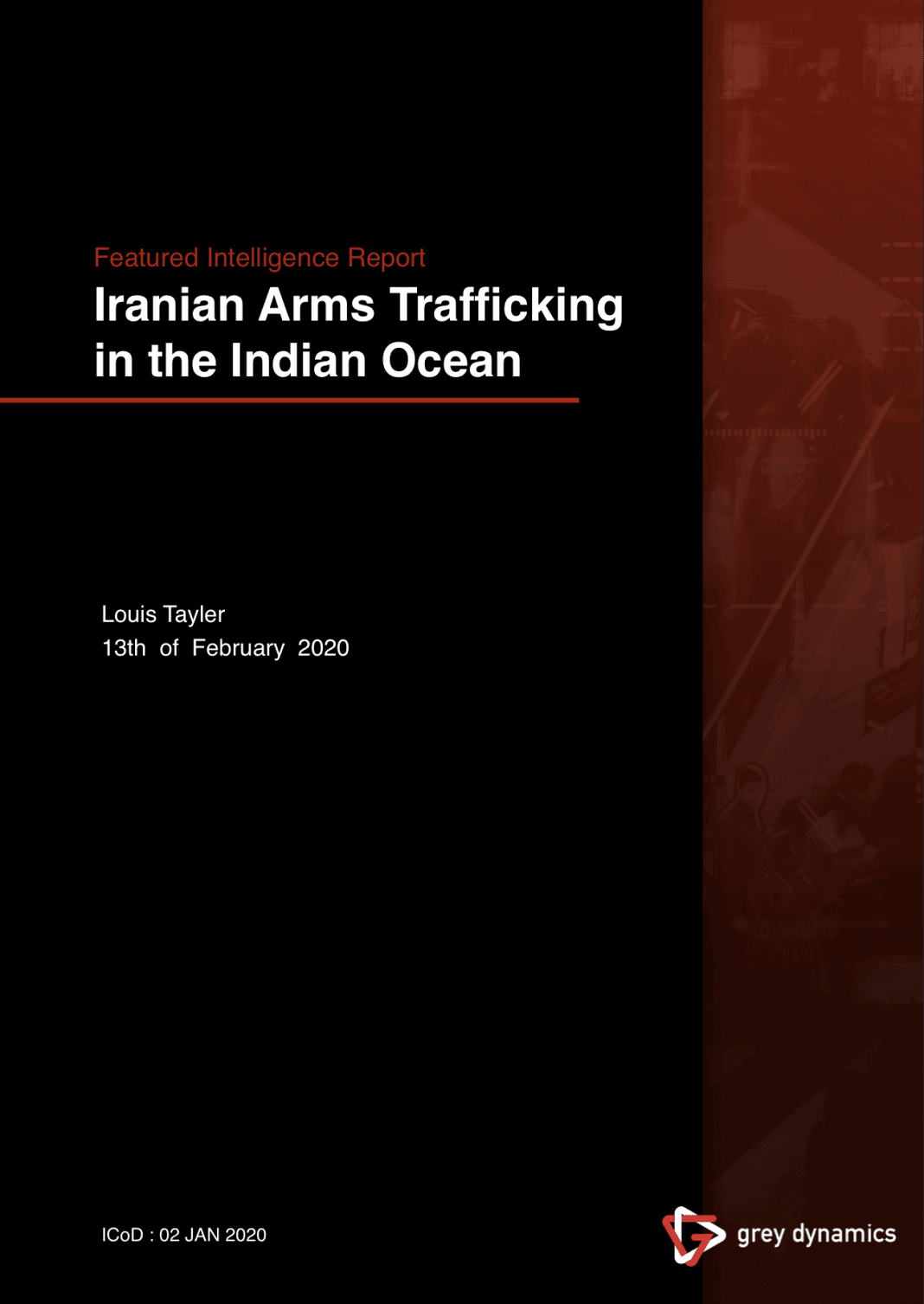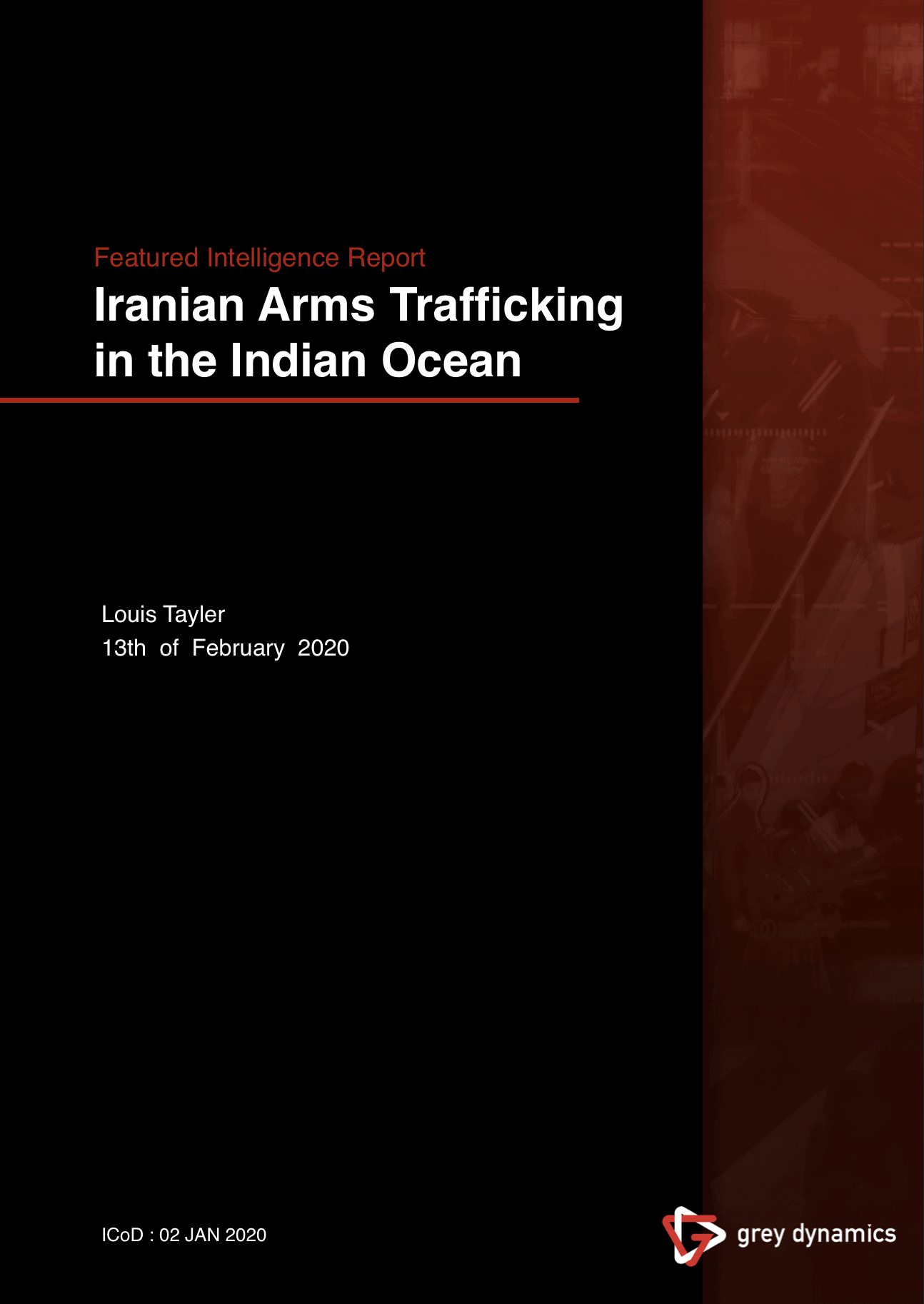In February and March 2016, likely Iranian arms trafficking shipments on stateless “dhow” fishing boats were seized by the Royal Australian Navy, the French Navy, and the US Navy on three occasions. The seizures included not only thousands of AK variant rifles, but importantly, a number of Type 73 GPMGs and RPG-7 launchers. A subsequent investigation by Armament Research Services (ARES) concluded that with a near certainty, these shipments originated in Iran and were destined for Yemen, perhaps via Somalia.
Key Judgements
KJ-1. Clear indicators of successful Iranian arms smuggling to Somalia or Yemen include Iranian-made RPG systems and North Korean-made Type 73 GPMGs.
KJ-2. Dhow-based arms smuggling is a large-scale operation, which has likely already tangibly impacted the course of the war in Yemen.
KJ-3. Arms are likely destined for the war in Yemen via Somalia, a highly useful vector for arms traveling through the continent.
Analysis
Iranian RPG-7 Systems
Of the weapons seized from dhows in early 2016, the RPG-7 launchers indicate strongly that they are of Iranian origin. Some of the weapons seized feature a circular grip, a feature nearly unique to RPGs from Iran – the only other known country to make them in this way is Sudan. Additionally, most of the RPGs feature a distinctive green heatshield that is non-standard on most RPG variants in use in the Middle East. It is a recognised feature of Iranian made launchers. Finally, the markings available from images online appear to support the hypothesis that the launchers are from Iran. Comparison of the seized shipment of RPGs with an Iranian RPG found in Lebanon provides further evidence as a useful point of comparison.
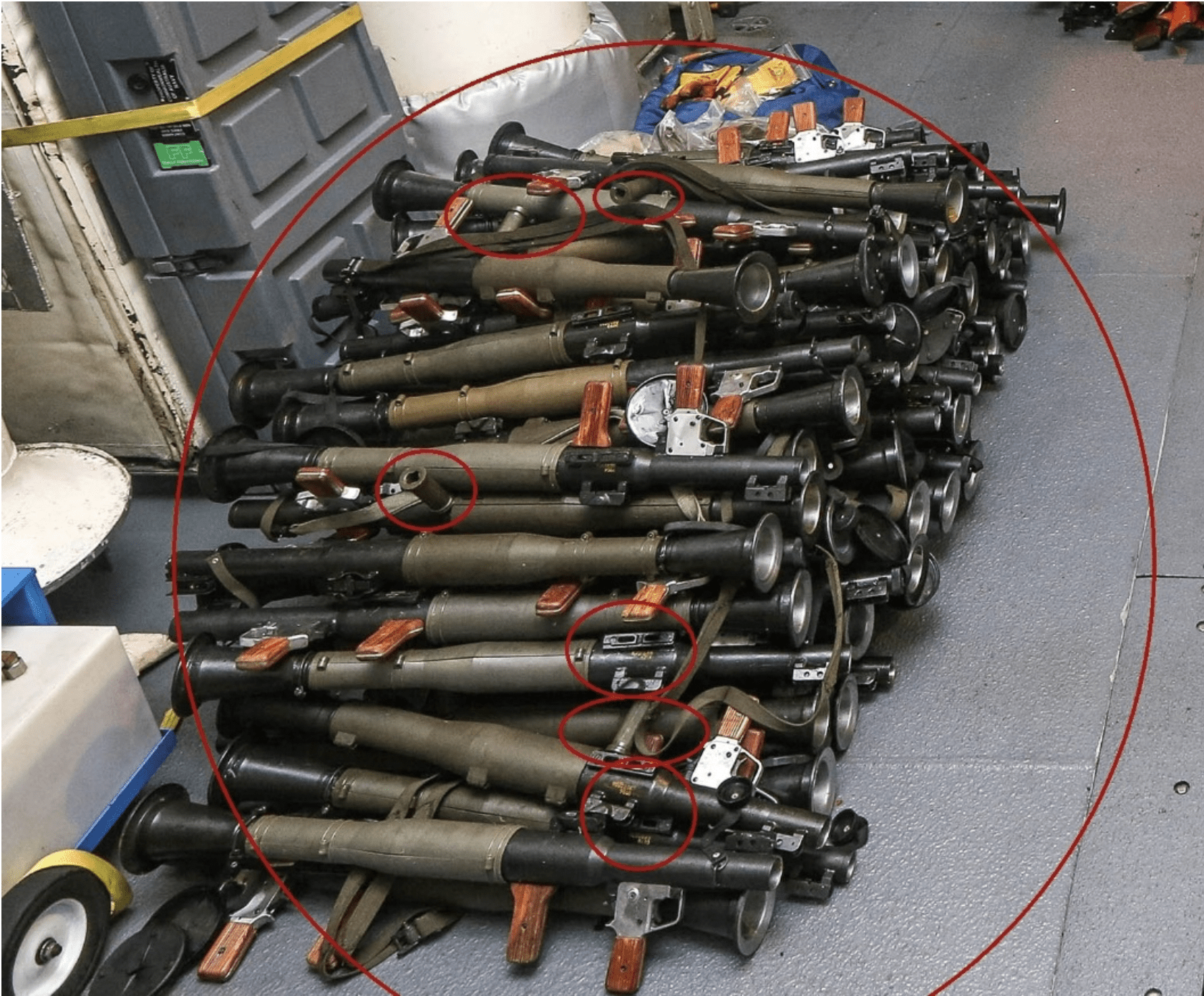
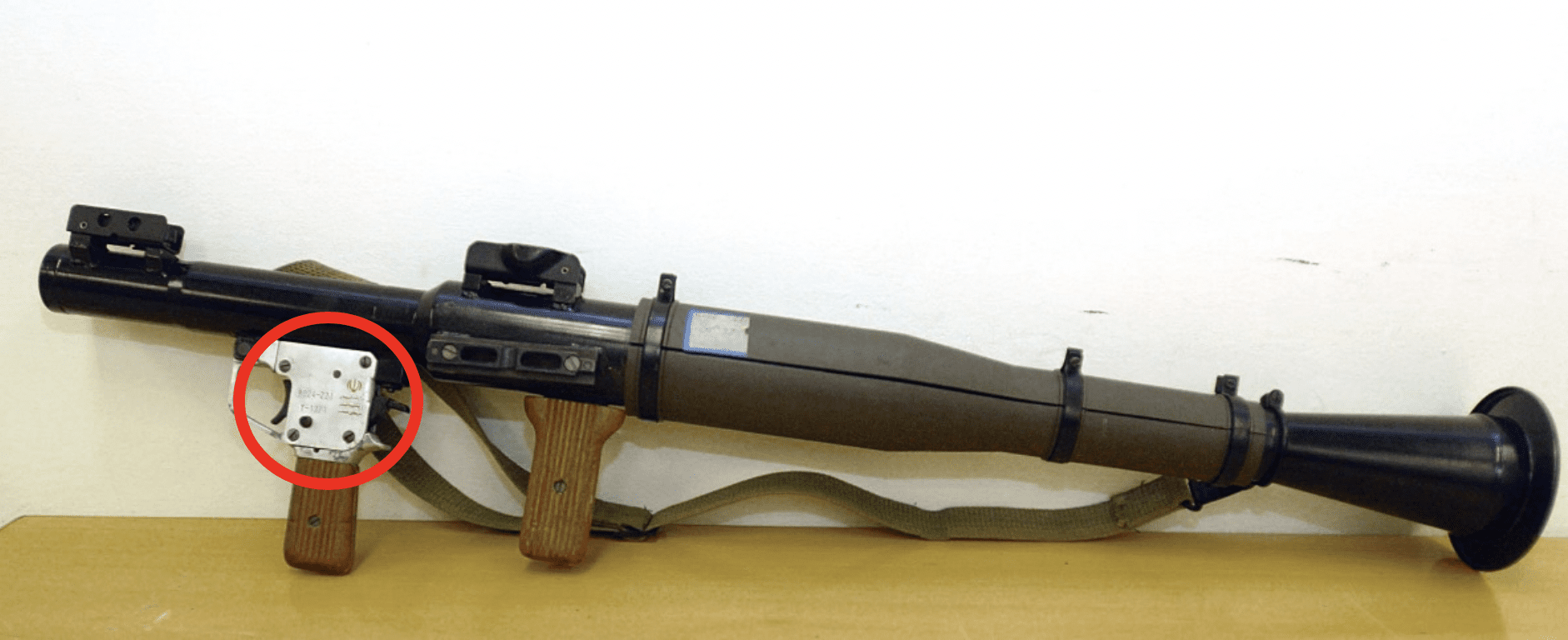

North Korean Type 73 GPMGs
The North Korean Type 73 GPMG is a machine gun exported to only one known customer, Iran, during the Iran-Iraq War. They are reasonably rare small arms, and therefore a useful indication of origin. The Type 73 has several features that can be identified in Figures 3 and 4, such as the distinctive muzzle, the ‘club’ flat-sided stock, and the unusual dual-feeding feature enabling it to be belt fed or use a magazine. The Type 73 is otherwise visually similar to the PKM, another commonly used machine gun of the same calibre. The Type 73 GPMGs seized by the Australian Navy appear to be shiny, undamaged, and in excellent condition. This likely indicates local production or refurbishment of Type 73s in Iran. Presence of the Type 73 on two of the dhows is further evidence of Iranian origin of the arms, which have been documented in Yemen, and are known to be in use by Iranian supported militias in Iraq.
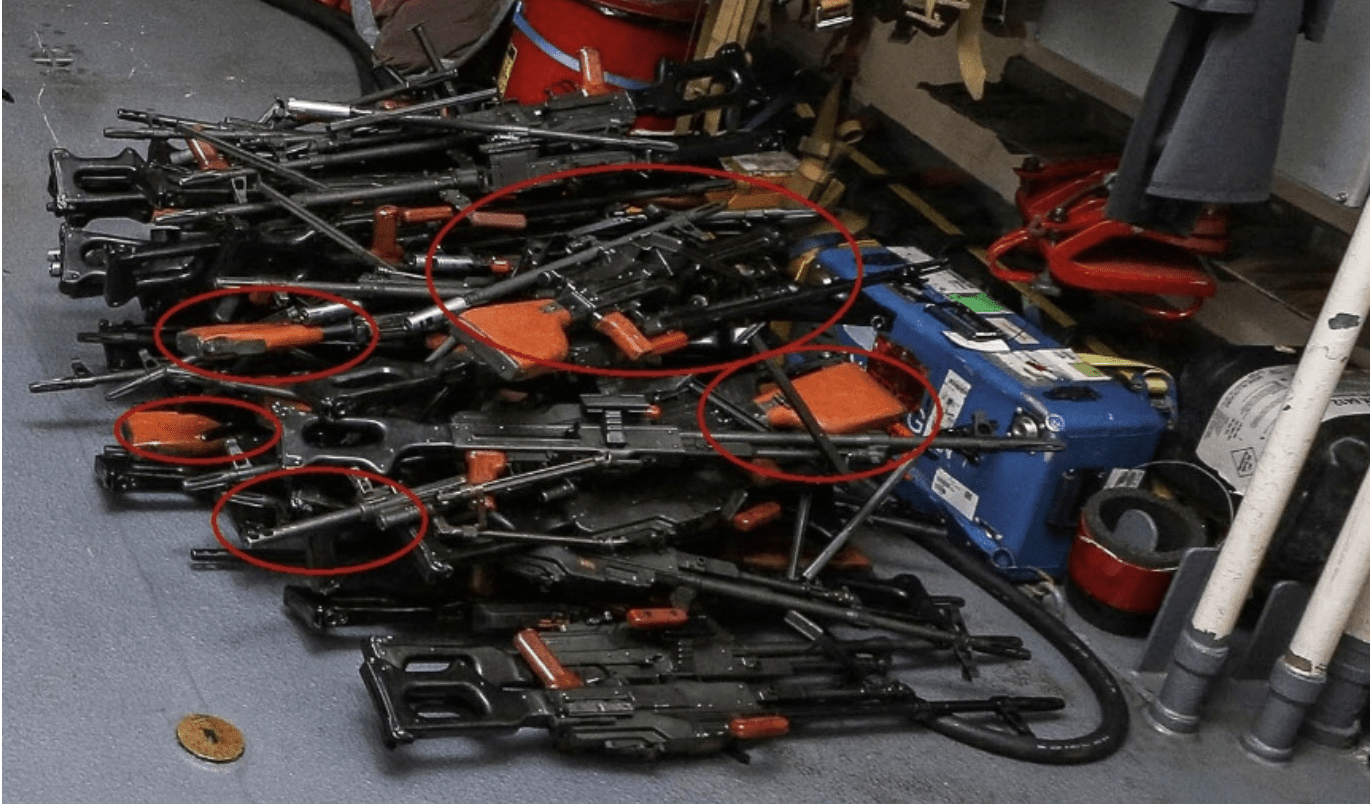
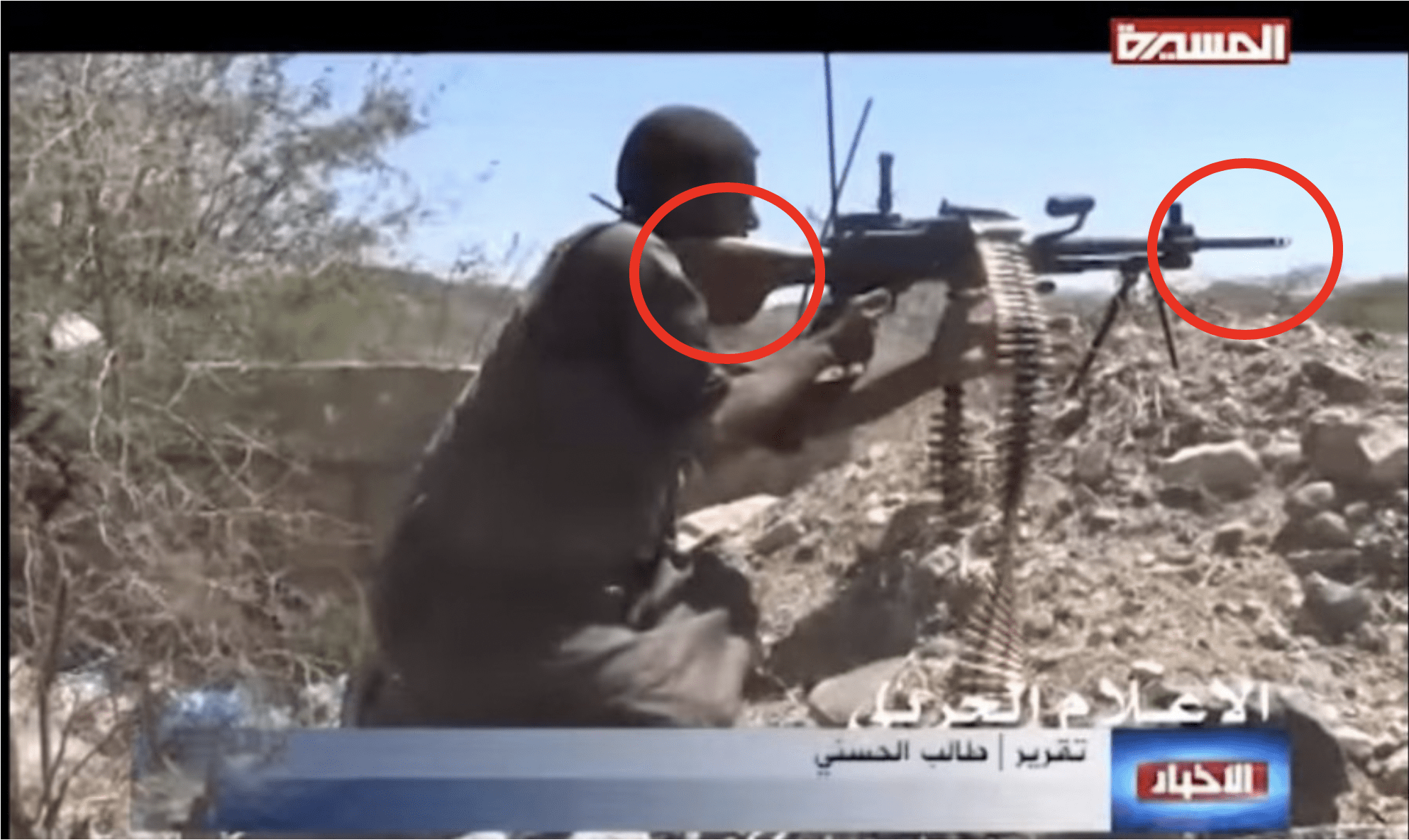
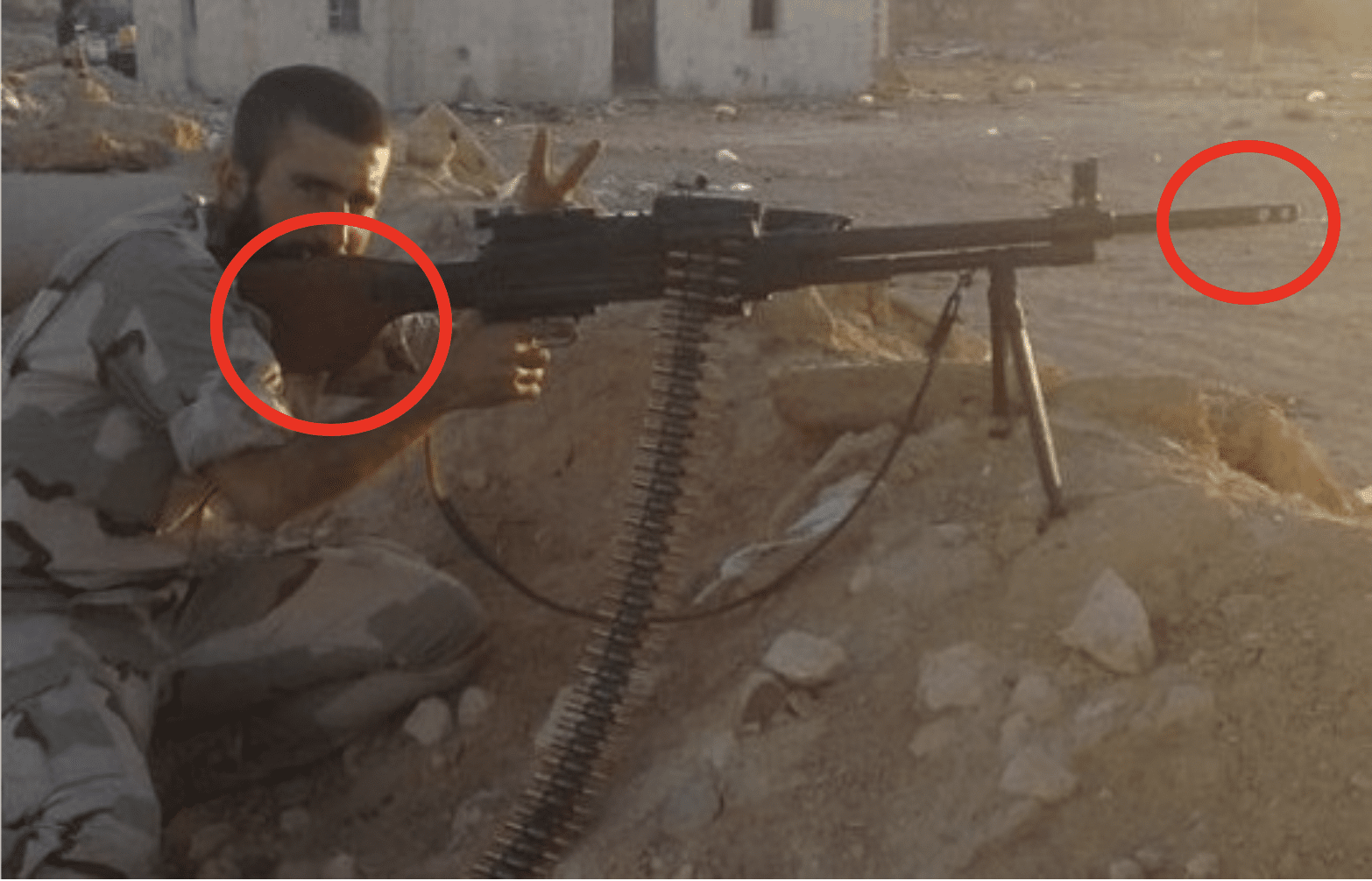
Assessment: Clear indicators of successful Iranian arms smuggling to Somalia or Yemen include Iranian-made RPG systems and North Korean-made Type 73 GPMGs. Both the quality, quantity, and rarity of weapons indicate this is the action of Iran. The ubiquity of the Type 73, in other warzones, in use by groups aligned with Iran, further implies Iranian origin of seized arms.
Large Scale Iranian Arms Smuggling Operations
Counting only the AK variants seized in these three cases, there were nearly 4000 AK variants seized in a single month-long period. Vice Admiral Donegan of the US Navy has publicly stated that they expect that there are some Iranian arms trafficking that make it through. Another US Navy Officer speaking confidentially to the Washington Post stated that only 10-15% of all illicit cargo is “interdicted”. The Houthis in Yemen have between 180,000 to 200,000 armed men. Thus, it becomes clear that with smuggling on this scale, it represents enough arms to equip a significant proportion of the Houthi army, if this or similar levels of smuggling were successfully undertaken over a number of months.
Assessment: Dhow-based Iranian arms trafficking across the Indian Ocean is a large-scale operation, which has likely already tangibly impacted the course of the war in Yemen. Counter-Smuggling efforts by US and Allied nations in this area are extremely important to mitigate effect of these arms on the Yemeni conflict.
A Smuggling Vector; Somalia
Somalia represents a highly useful smuggling vector for illicit trades of all kinds. Criminal networks and pre-existing illicit flows can be exploited by states to achieve their own aims, namely, the smuggling of arms to Yemen to support the Houthis. The Yemeni coast is under careful watch by a multi-nation task force attempting to stop just such smuggling activities. Scrutiny on Somalia is still present, if lesser. It seems likely that sending an entire shipment to the African coast to be split up into small parcels and taken the remaining short distance into Yemen piecemeal is the best way of ensuring successful smuggling. Though some of the seizures described by this report were off the coast of Oman, it seems likely that the non-professional smugglers caught by the Australian Navy represent the lesser talented smugglers.
Assessment: Arms are likely destined for the war in Yemen via Somalia, a highly useful vector for Iranian arms trafficking through Africa and the Middle East.The longer that such smuggling operations go on, the more sophisticated networks and routes will likely become, assuming little interruption by 3rd parties.
Download ‘Iranian Arms Trafficking in the Indian Ocean’ in PDF

